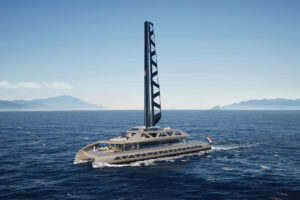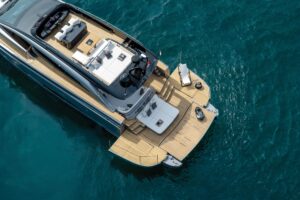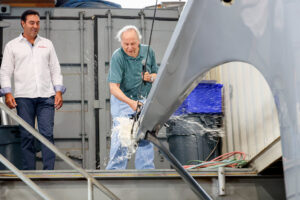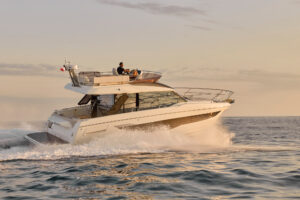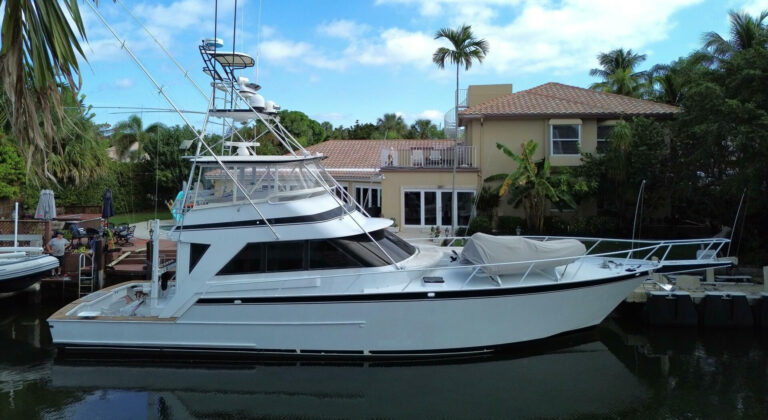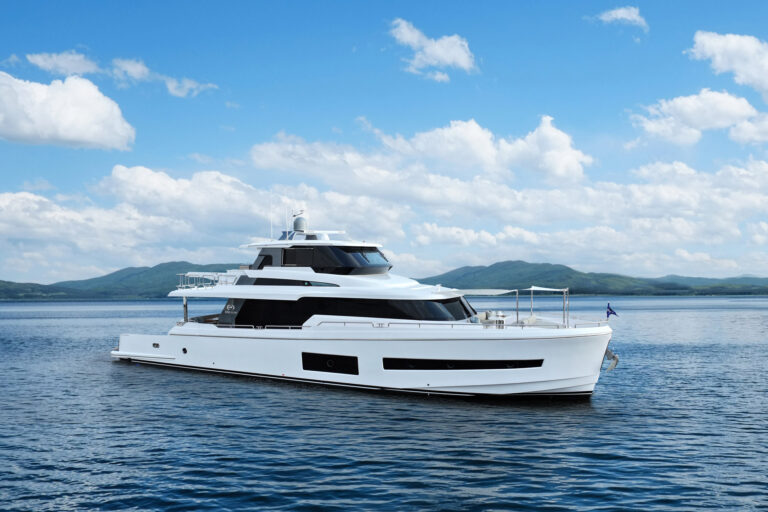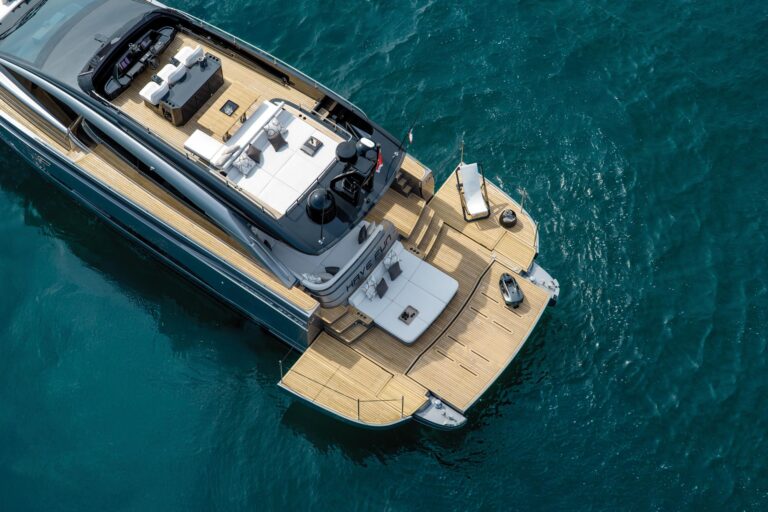







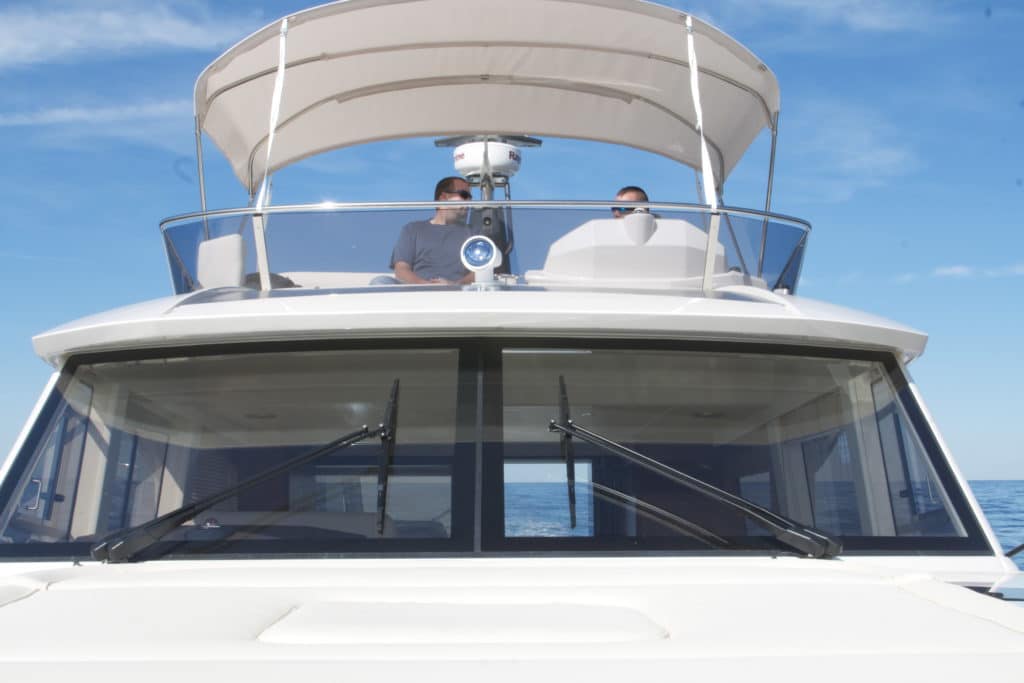
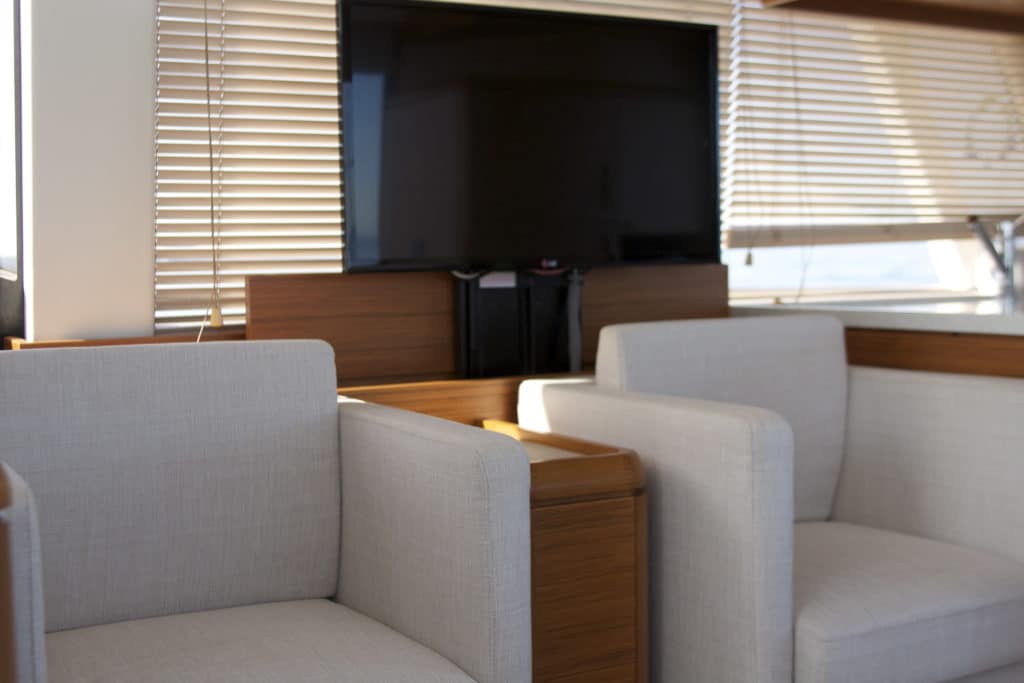
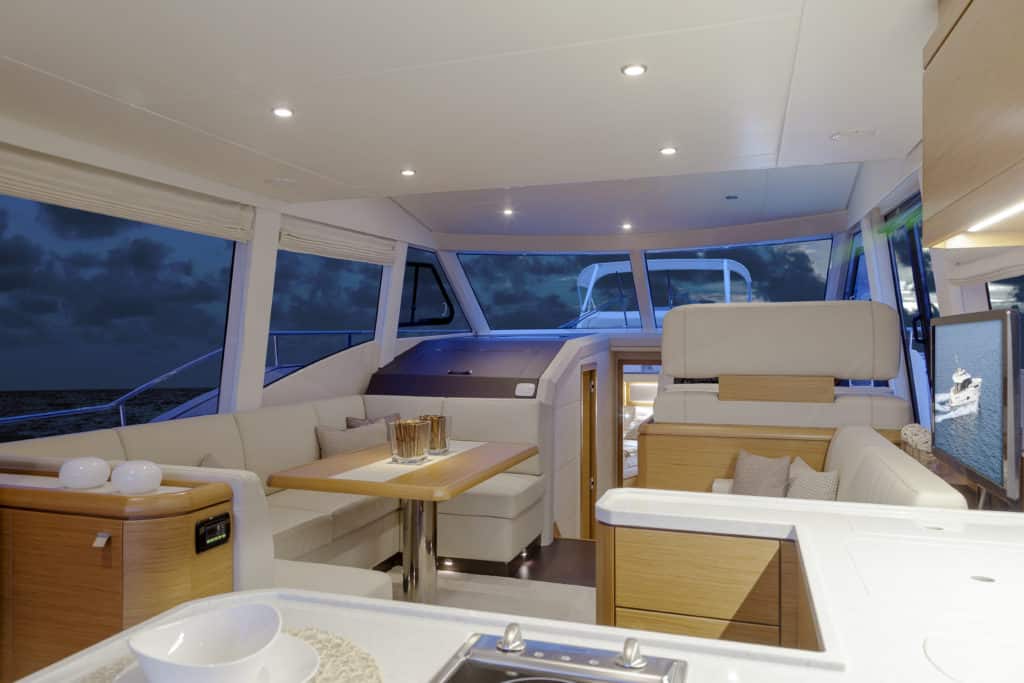
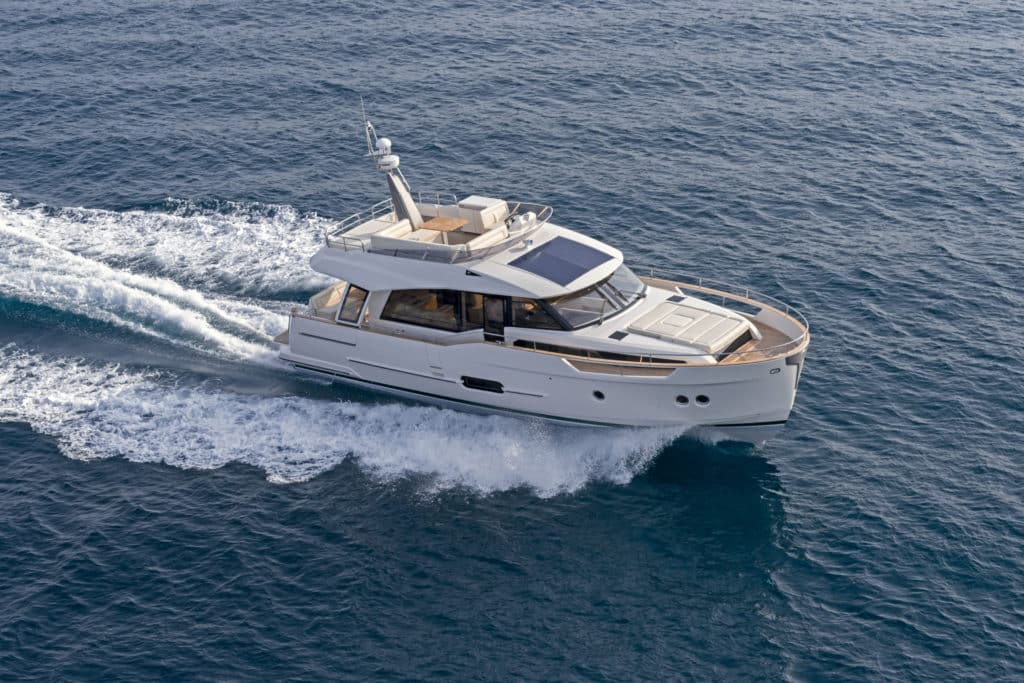


There’s one! Do you see that one?” shouted Mike Giles, customer service manager for Greenline North America, as he pointed just off the starboard bow. “There’s another one!”
Capt. Jack Guido responded with swift turns of the wheel, juking the Greenline 48 around semisubmerged lobster pot markers. With water temperatures at 58 degrees, none of us were keen to dive in and free the props from crustacean-filled traps. Our trip from Boston to Newport, Rhode Island — leg one for my crew mates’ delivery to Annapolis, Maryland — seemed to be one continuous, zigzagged course through a seemingly infinite lobster pot field.

Greenline’s path toward noteworthiness and industry acceptance has seen similar twists and turns. Designs for its first hybrid diesel/electric yacht, the Greenline 33, began during the heart of the 2008 recession, a tumultuous time when few builders dared to create new models. Seaway, the design firm for Greenline, embraced the poor economy, using it as a force to drive change. “We thought it was time for something new in the industry,” explains Japec Jakopin, senior founder of Seaway, who believed the market needed fuel-efficient vessels that delivered a lot of fun. “If we didn’t innovate, we were going to lose boaters.”
While some boaters may not have been investing as much into yachts as they once did, he felt people still wanted to be on the water. “That’s why pontoon boats are rising in popularity: because of their ratio of fun to cost. That’s what we’re replicating. People still want to be on the water and have a bloody good time.”
September 2009 marked the debut of the Greenline 33, an electric- and diesel-powered vessel with solar panels affixed to her hardtop. Boasting an emissions-free cruising mode and powerful (automobile-grade) solar-powered lithium batteries, the design had many people, myself included, unsure of what to make of it all.
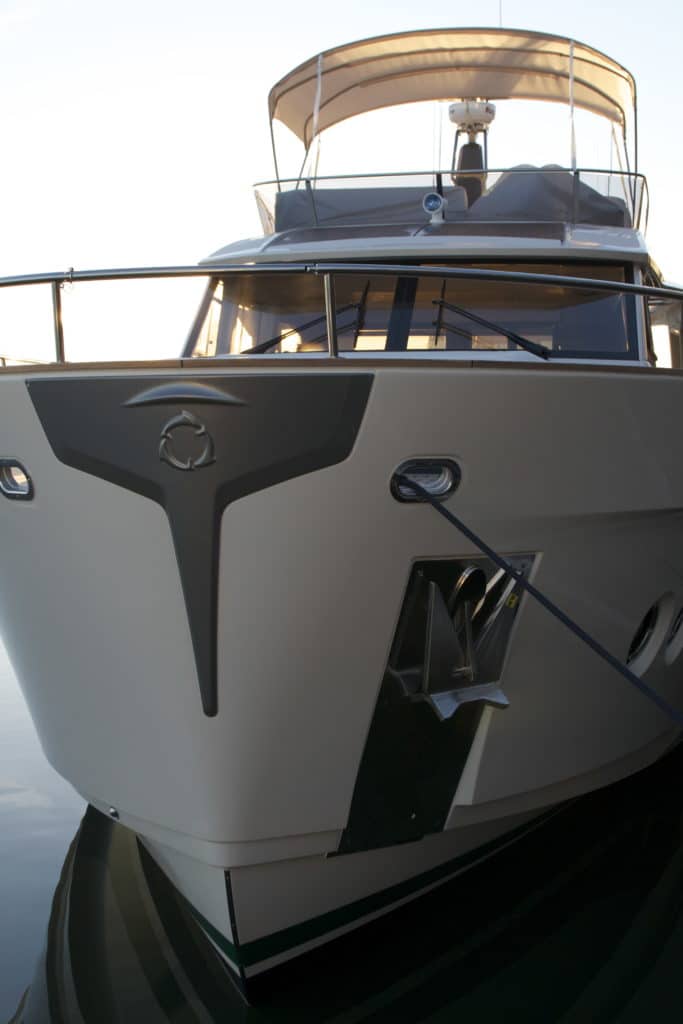
Like some in the industry, I succumbed to the stigma that being green was synonymous with low power. (I’m looking at you, Prius!) This belief was enhanced by the 48’s modest speeds. Our fully loaded 48 topped out at 14.5 knots in calm conditions, though optional 380-horsepower diesels should allow her to do 23 knots.
Speed, however, is just one component in measuring a vessel’s power, or so I would learn. Our tranquil passage turned sporty after exiting the Cape Cod Canal and running into a determined incoming current on Buzzards Bay. Four- to 5-foot seas were lying in wait.
Well, this is an inopportune time to begin my shift at the wheel, I thought as I stepped up to the helm.
If the 48 could talk, I imagine she would have replied, “This is a perfect time for this nonbeliever’s shift at the wheel.”
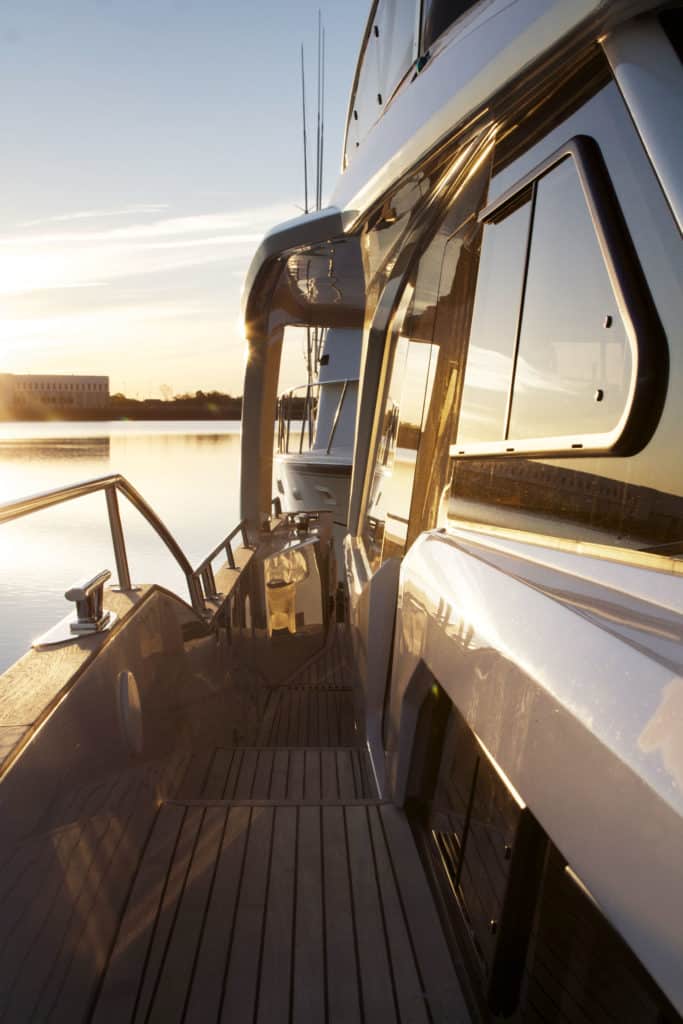
My doubts regarding the 48’s power were diminished with each sizable wave she shouldered through, and dispelled as she reduced the stacked water into a mist that the windshield wipers flicked away like a fighter wiping sweat from his brow. The ride was exceptionally stable. I looked back at my crew mates, who were lounging comfortably on the large C-shaped sofa and watching The Weather Channel. Judging by their demeanor, you would have thought we were anchored in a quiet cove somewhere.
OK, I thought. I get it now.
“The hull allows a family on board to converse, play cards or watch a movie,” Jakopin said. “There is no asking ‘Are we there yet?’ We’re making the journey fun again.”
Contributing to that fun is a cleverly designed cockpit, which must have been conceived by people who spend time on the water. How else would one think to incorporate opening oversize windows that turn the aft galley into an extension of the cockpit, allowing the cook to be part of the outdoor party?

Besides excellent handling and a clever cockpit configuration, Greenline’s designers saw other, outside factors as reasons why the line might fast become popular.
“We predicted that rising fuel costs and damage to the environment would become real, tangible issues,” said Jakopin. That prediction came to fruition sooner than even he expected; the European Union has since passed a law stating that, by 2020, at least 20 percent of the energy Europeans consume must come from a renewable source. And, at the time of this writing, the average cost of marine diesel was $4 per gallon, which is perhaps more influential than a law in showcasing the value of hybrid propulsion.
Able to cruise 25 nautical miles at 5 knots in electric mode (under ideal conditions) and 1,000 nautical miles at 7 knots under diesel power, the 48 is made to travel. According to Greenline, the secret to her range is the “super displacement” hull, which is derived from sailboat hull lines to reduce drag. “The fuel consumption per nautical mile is less than that of a comparable displacement hull and as little as a quarter of a semidisplacement, twin-engine planing boat,” Jakopin explained.

Before I knew it, the sun was setting off our port bow and we were heading into Newport Harbor. The push of a button shut off the diesel engines and summoned the twin 14 kW electric drives. We crept up on a mooring ball in near silence. In fact, all I could hear from the flybridge was the sound of water rushing past the hull, something our sailing neighbors seemed to notice. Having forgotten a boathook, we grabbed the mooring line from the swim platform and easily walked it to the bow via walk-around side decks.
“Sure we can’t convince you to come with us to Annapolis?” Giles asked as we shook hands upon my departure.
My mind filled with thoughts of cruising up Long Island Sound, watching the New York City skyline rise off our bow and disappear in our wake, and then going on to the Chesapeake. It was tempting. “Maybe next time,” I said wistfully.
Sure, there are challenges before acceptance of hybrid-yacht technology can hit critical mass, but if this cruise from Boston to Newport proved anything, it’s that Greenline and this 48 is willing and able to tackle them head on.

